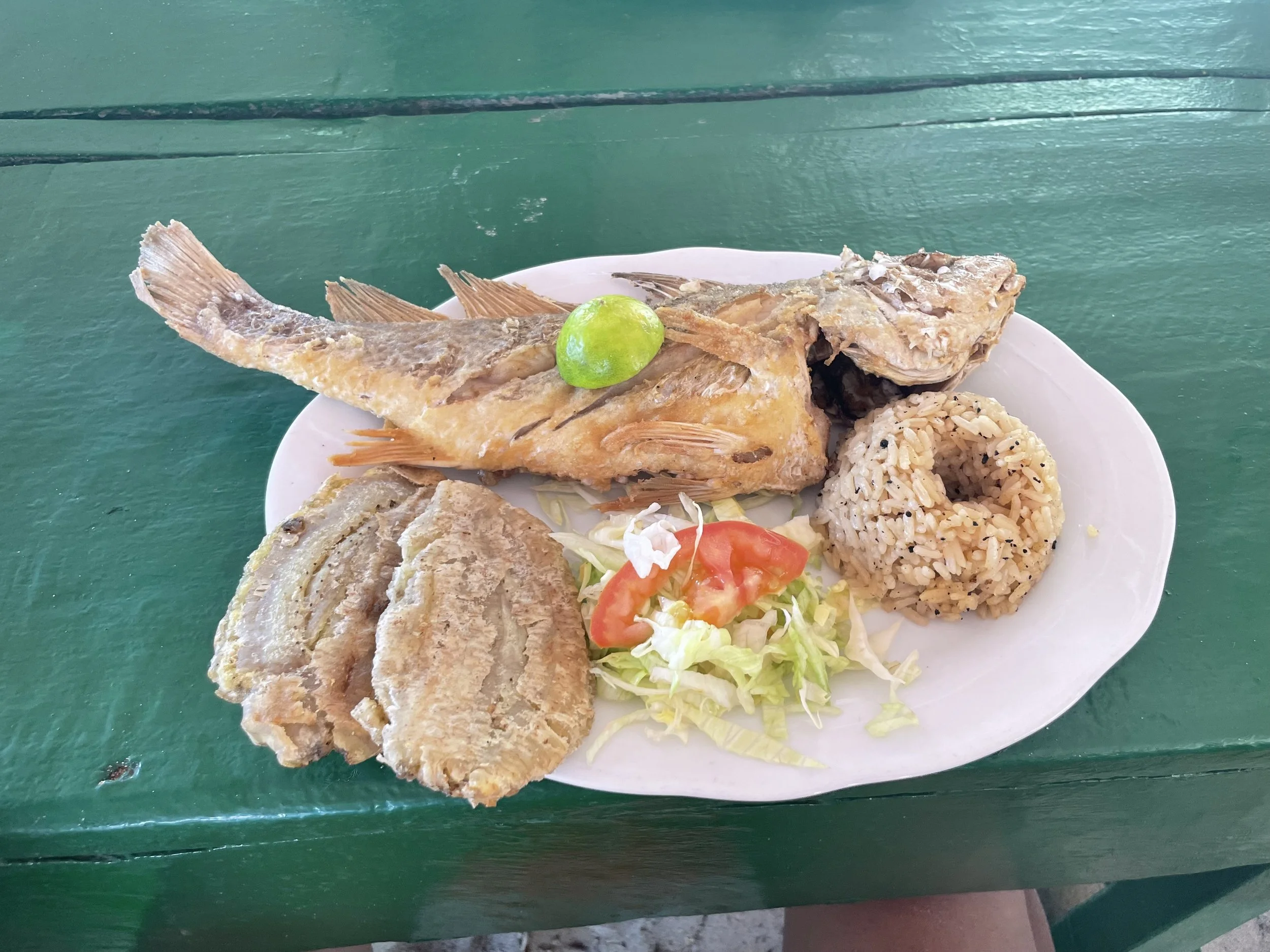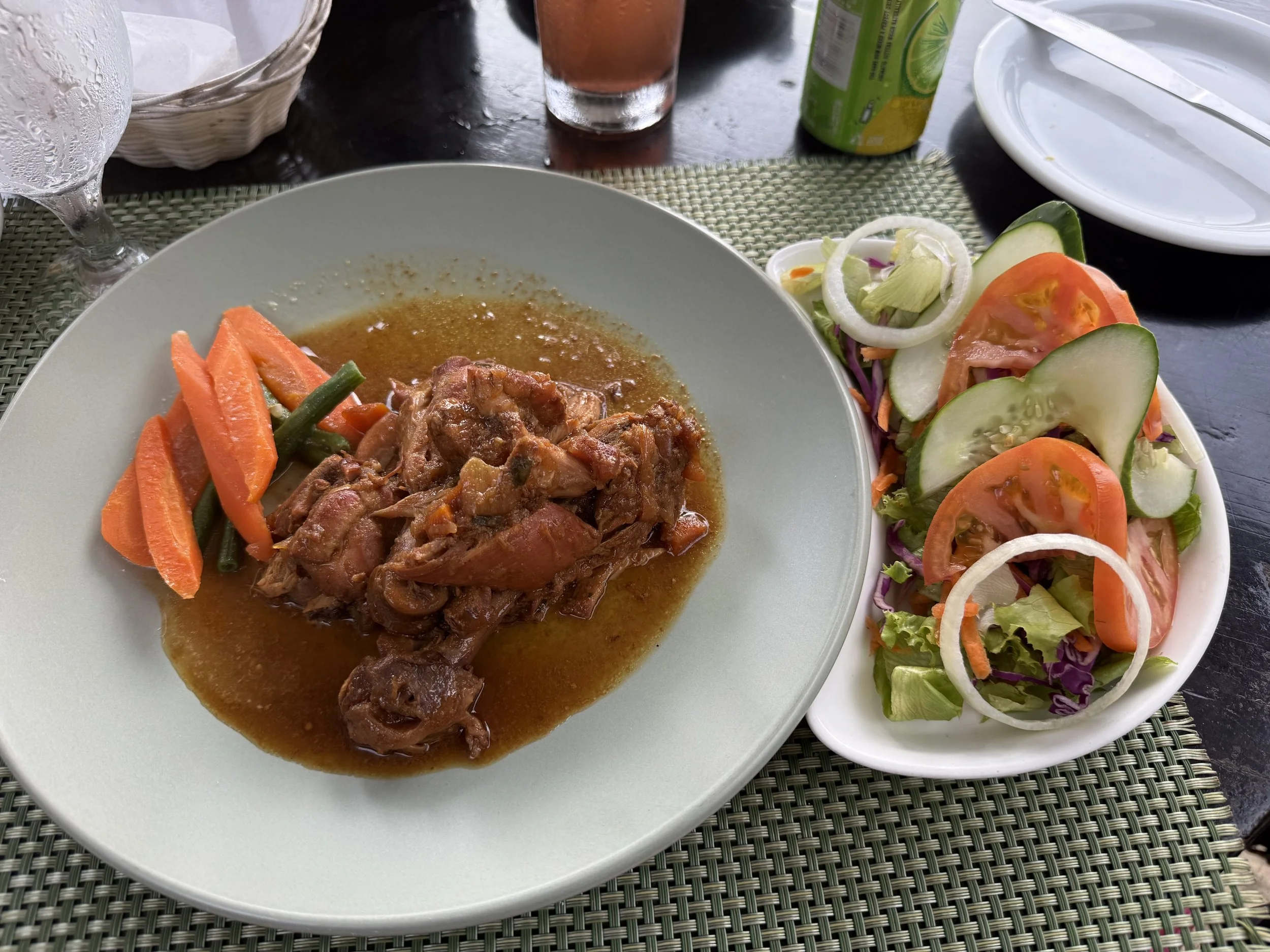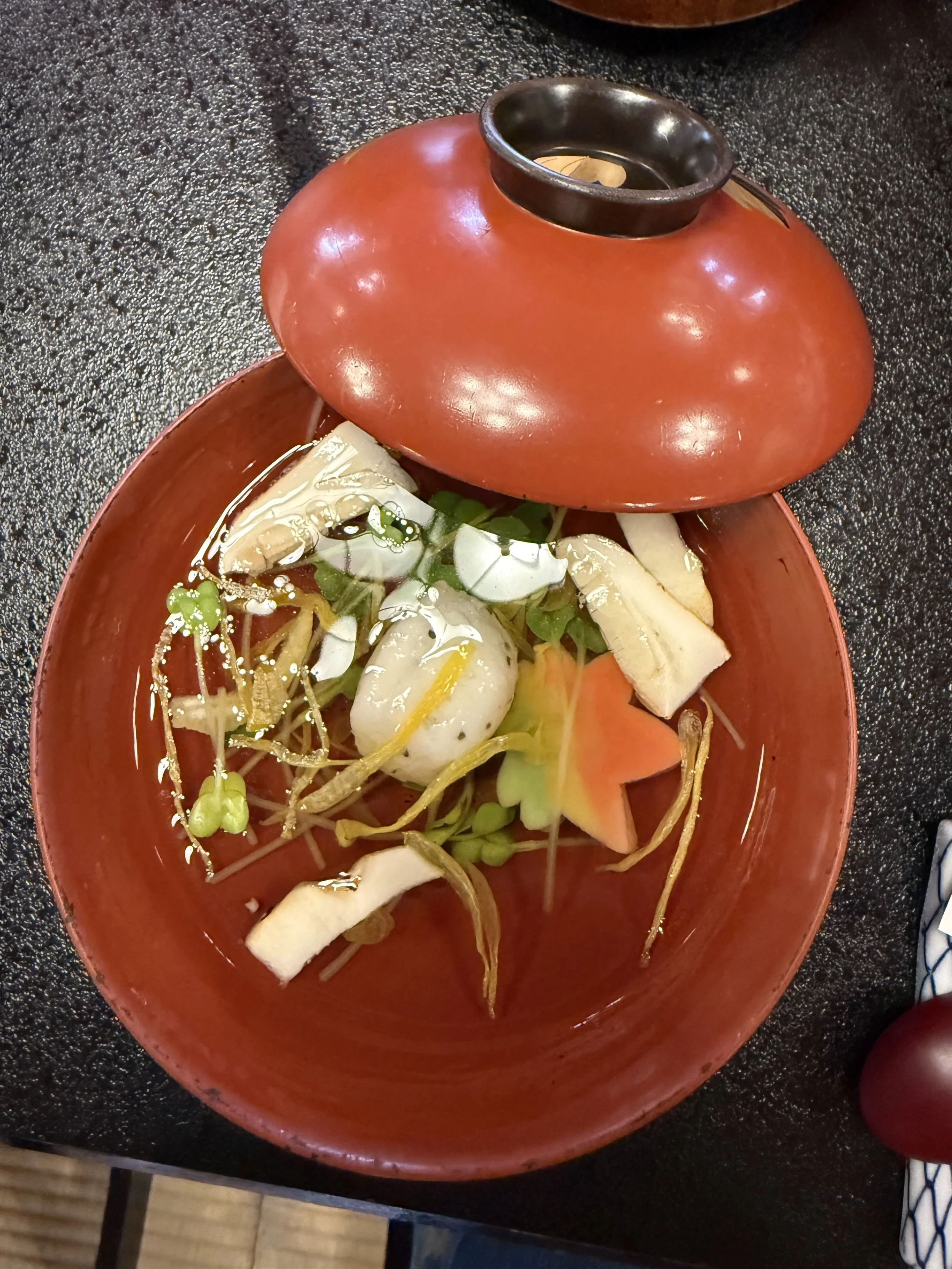Eating While Abroad
A sample plate in Bogota
At some point while traveling, you are going to get hungry. For some people, food is the destination. They plan entire trips around restaurants, famous chefs, and celebrated dishes. For others, eating is just a way to keep going until the next stop. I fall somewhere in between. I enjoy food, but it is not the main focus of my trips.
It does not help that I am a selective eater. I do not eat most meats and only a small amount of seafood. I avoid alcohol, drinks with texture, and foods with strong or unfamiliar smells. Still, I enjoy seeing what the world has to offer. Traveling exposes you to everything from guinea pig in Ecuador to fried ants in Colombia and whole octopus in Japan. I may not try it all, but I find it fascinating to see what different cultures consider a delicacy or an everyday meal.
Whole fried fish and plantains in Santa Marta
Respecting Food Traditions
Traveling as a selective eater means learning to balance personal preference with cultural respect. Food is often a gesture of hospitality, and I try to honor that. If I am in a place where refusing food would be considered rude, I will accept what is offered and take a polite bite. I may not love it, but I appreciate the effort behind it. In many parts of the world, the idea of saying no to food or following a strict diet is unfamiliar. Meals become more than nourishment; they are a way people welcome you into their homes and share a piece of their world. Respecting that moment, even when the dish is not something you would normally eat, is part of what makes travel meaningful.
Man outside prepping fish in Tokyo
Cultural Norms and First Impressions
How food is prepared can sometimes feel surprising when it differs from what you are used to, yet it may be completely normal where you are. What seems unusual to you might be someone else’s comfort dish or a family recipe passed down for generations. The key is to stay curious instead of reactive. Try not to make faces or turn your nose up, even if what is on the table catches you off guard. Showing genuine interest and patience goes a long way in building connection, even when you quietly choose to pass on the plate.
Stewed Chicken in Grenada
Finding Food That Works
Being selective on the road comes with challenges, especially when it comes to ordering food. Menus do not always list every ingredient, and half the time they are written in another language or use unfamiliar names for familiar things. A bell pepper in the United States is a capsicum in Australia. Eggplant becomes aubergine in parts of Europe, and zucchini is called courgette. Even chips can mean fries in one country and a bag of crisps in another. And when someone says a dish is “mild,” that can mean anything depending on who is cooking. Learning these small differences helps avoid surprises and makes eating abroad a little easier.
Before I travel, I take time to look up local dishes so I have an idea of what I can actually eat once I arrive. In Asia, where seafood, beef, and pork are common, I stuck to simple noodle soups and light broths that were easy to enjoy. Central America took a little more effort since many meals centered around meat or heavy sauces, but I could usually find dishes made with corn, beans, and vegetables. No matter where I am, I always make a stop at a grocery store. There is something comforting about walking through the aisles, seeing familiar staples beside local snacks in flavors I cannot find at home.
Being able to communicate your preferences also goes a long way. Learning a few key phrases can help prevent a food catastrophe. Simple words like “no thank you,” “no shellfish,” “no meat,” and “no nuts” can make a big difference. You do not have to be fluent, you just have to be clear.
Enjoying Food at Your Own Pace
Being selective does not mean missing out on culture. It just changes how you experience it. I like visiting markets where I can see what is being cooked and ask questions before trying anything. Food tours with small tastings are another easy way to explore without pressure. Every now and then, I even find something I genuinely like.
Over time, I have realized that traveling as a selective eater is not about limitation, it is about awareness. It makes you pay attention to what is on your plate and appreciate how food connects people everywhere. I do not apologize for being particular. I travel for the landscapes, the history, and the people. Food simply finds its place within that experience.
So yes, I am selective. But I have eaten local fruits in Singapore, stewed chicken in the Caribbean, and pasta in Italy. I have stood at food stalls where I could not read a single word on the sign and still managed to enjoy something new. Being particular does not mean you have to starve while traveling. It just means you plan a little more carefully, ask a few extra questions, and stay open to what the world has to offer.
Fish Soup in Kochi
Key Takeaways
1. Know your limits and your allergies.
Being selective is one thing, but being allergic is another. Before you go, research how your allergens appear in local cuisine and labeling. In some regions, peanuts, shellfish, or sesame are in everyday dishes that do not look risky. Learn the words for your allergens in the local language and carry a translation card or photo on your phone. And if you have a serious allergy, bring your EpiPen or related device. Do not assume you will find one abroad or that the nearest pharmacy will understand what you need. It sounds dramatic, but the goal is simple: make sure you do not die over dinner.
2. Do your homework before you go.
Look up local dishes and ingredients so you are not caught off guard. Many cuisines rely on hidden sauces, broths, or cooking oils that contain meat or allergens. Knowing what to expect helps you enjoy meals without worry.
3. Learn key food phrases.
You do not need to be fluent, just specific. Phrases like “no meat,” “no fish,” “no peanuts,” “I am allergic,” and “please use clean utensils” are worth knowing. Write them down or keep a translation card handy for when your phone is out of range.
4. Grocery stores and markets are your friends.
They are reliable, labeled, and full of simple options. Fresh fruit, bread, yogurt, nuts, or packaged snacks can keep you fed between meals or when restaurant options feel risky.
5. Keep emergency snacks handy.
Flights get delayed, tours run long, and sometimes your only option is a vending machine full of mystery chips. Pack snacks you trust. It is not overplanning, it is survival.
6. Respect food culture but trust your instincts.
If refusing a dish would be rude, take a polite bite. But if something looks unsafe or includes ingredients you cannot eat, it is perfectly fine to decline. You are there to experience the world, not to end up in a clinic.
7. Ask questions and show interest.
People are usually proud of their food and happy to explain it if you ask sincerely. Curiosity opens doors, even if you still decide not to eat what is offered.
8. Remember, food is not the only reason to travel.
You can still experience a place fully through its people, landscapes, and stories. Being selective does not make you less adventurous. It just means you know what keeps you safe and comfortable enough to keep exploring.






